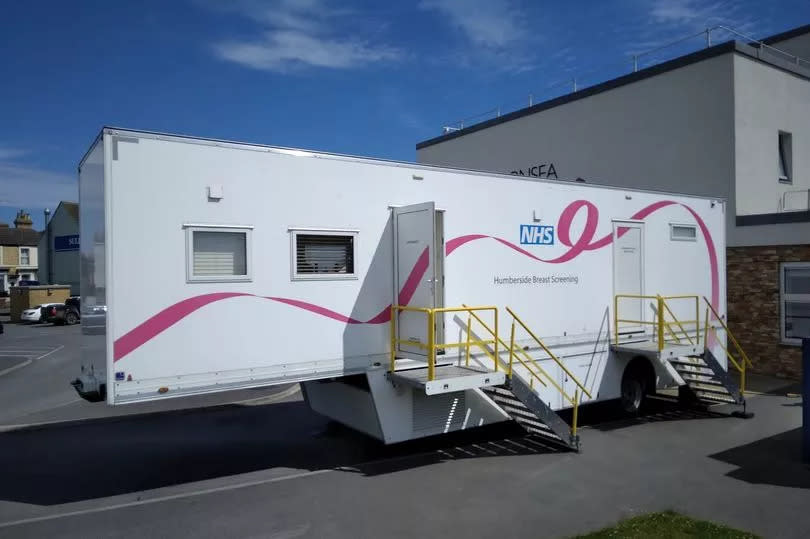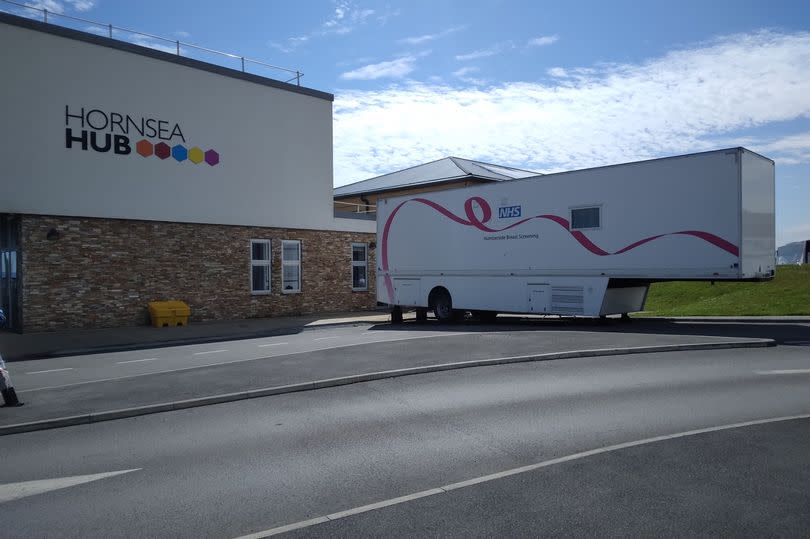'Why I accept all my breast screening invitations and what it’s like to have a mammogram'

I have lost friends younger than me to breast cancer. On the flipside, I have family members who are survivors of breast cancer.
To me it’s a no-brainer to accept the automatic invitations I have received since I turned 50 to attend for breast screening, as the risk of breast cancer increases with age. Not every woman feels the same, however.
Breast Cancer Now (BCN) recorded a record low take-up of screening appointments in 2021/22 and while Covid-19 was responsible for a sharp drop in attendance, the charity says uptake of routine screening was declining in England, long before the pandemic. Women living in areas of higher deprivation and those from certain ethnic backgrounds are much less likely to attend regular breast screening.
READ MORE:
Older people and pregnant women to be offered new NHS respiratory virus jab
Keep up to date with all the latest breaking news and top stories from Hull with our free newsletter
Sadly, these same groups often face higher rates of late-stage diagnosis and therefore, poorer outcomes, according to BCN. Problems of accessibility, misinformation, and social and cultural barriers can all be factors, too.
Fear and anxiety can play their part, but perhaps relaying my own experience will help in some way to allay those feelings in some of the women reading this. I am lucky to live in a postcode that’s convenient for visiting the NHS Humberside Breast Screening mobile unit, when it bases itself in the car park of Hornsea Hub.

My most recent invite came about eight days beforehand and was for a very precise 11.24am on a Tuesday morning in June. The mobile unit has seven steps up the entrance (the invitation letter does ask patients to let them know if they have mobility problems, among other considerations).
The door is locked and you have to ring the bell and wait. It was only a few moments before I was greeted by a friendly female staff member, who checked all my details and asked some routine questions. I was then shown to a cubicle and asked to undress my top half, including removing my bra, but I hadn’t even bothered to put one on that day, in the interests of speed and ease!
I was curtained off for privacy, although there was no one else present, staff or patient wise, and there was a seat inside the cubicle with some helpful BCN leaflets available to look at or pick up (which I did) about the signs and symptoms of breast cancer and how to check your breasts – they label it TLC – Touch Look Check.
There was music playing in the background, with an upbeat selection of tunes that I found myself humming along to. However, it was only a couple of minutes before I was being called through to another room where the breast X-ray machine was, taking all my belongings from the cubicle with me.
The mammographer doing the screening chatted pleasantly while she manoeuvred me into the correct position. You are standing up the whole time and you do a bit of side-stepping and shuffling to get to the exact spot needed.
Each breast, in turn, is then positioned by the gloved mammographer onto the X-ray machine and they are squeezed between two plastic plates, top and bottom, for a few seconds, during which you are asked not to move, or to talk. It’s over, like that, and you step back from the machine.
The process is repeated after the X-ray machine is tilted to one side, and there is another bit of shuffling and draping of your arm, on each side, and looking and leaning sideways, as the squish happens again to get images from another angle. I didn’t feel any discomfort, just pressure, and there’s no time to feel embarrassed.
I was done, dressed and out the door – you leave by a different exit – all within six minutes. About 22 ladies had been seen before me that morning, and I was told I would hear the results within two weeks (my letter actually came within six days and, thankfully, my X-rays showed no sign of cancer).
I was left with a lingering sort of tingling sensation for about ten minutes into my drive home, with Tammy Wynette on the car radio singing “sometimes it’s hard to be a woman”, and she’s right. BCN says breast screening is often uncomfortable and sometimes painful for some people.
Just once have I felt the need to take a sharp intake of breath when, at a previous mammogram, it was like having a Chinese burn on one of my boobs. If you have experienced that school playground prank of having someone wring the skin on your arm, you will know what I mean.
It’s never happened since and it wouldn’t put me off attending again, anyway. One thing I’d not realise until this occasion, and checking the NHS advice on breast screening, is that you shouldn’t use talcum powder or spray deodorant on the day, as this may affect the mammogram – but roll-on deodorant is OK.

 Yahoo News
Yahoo News 
